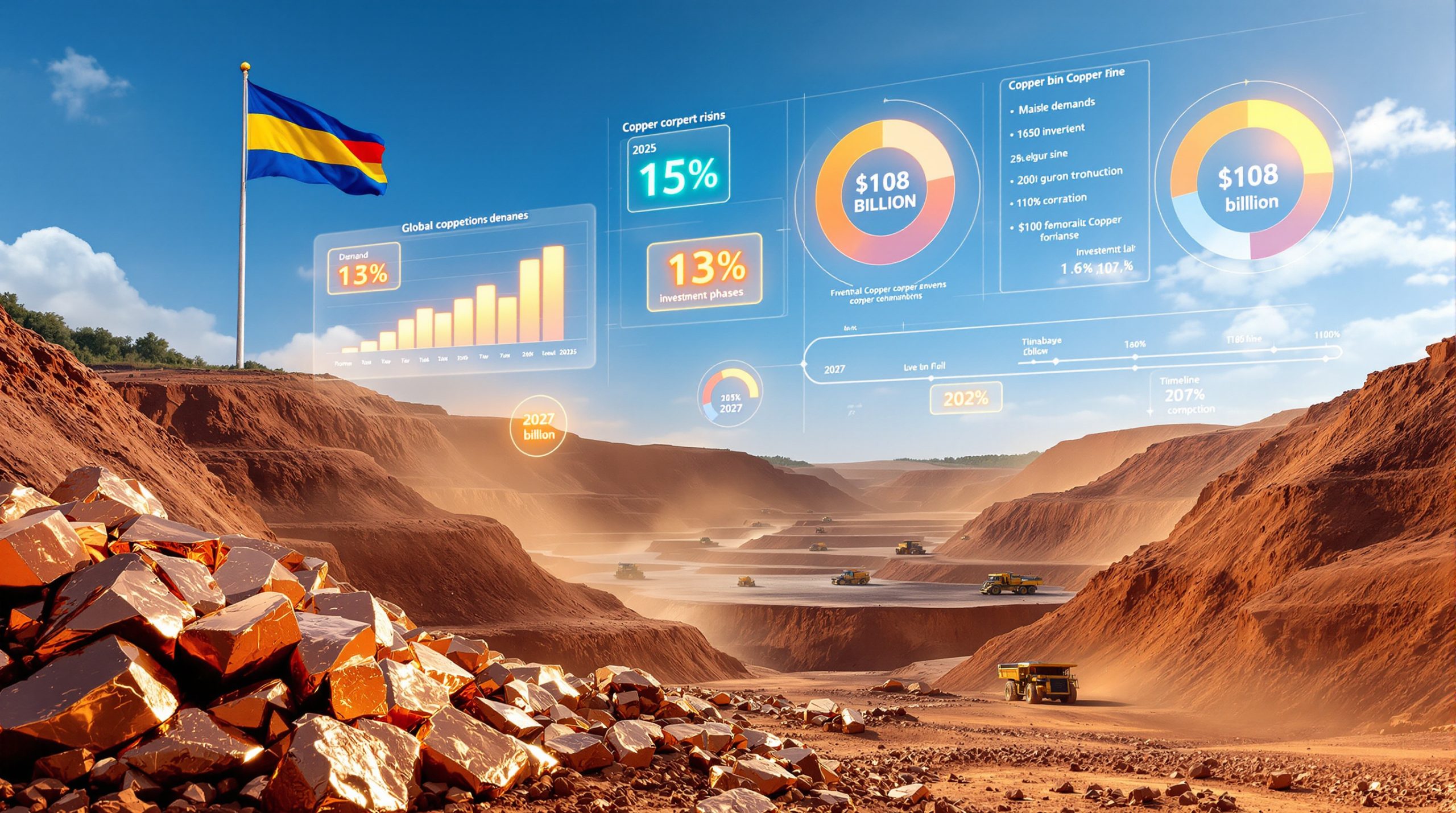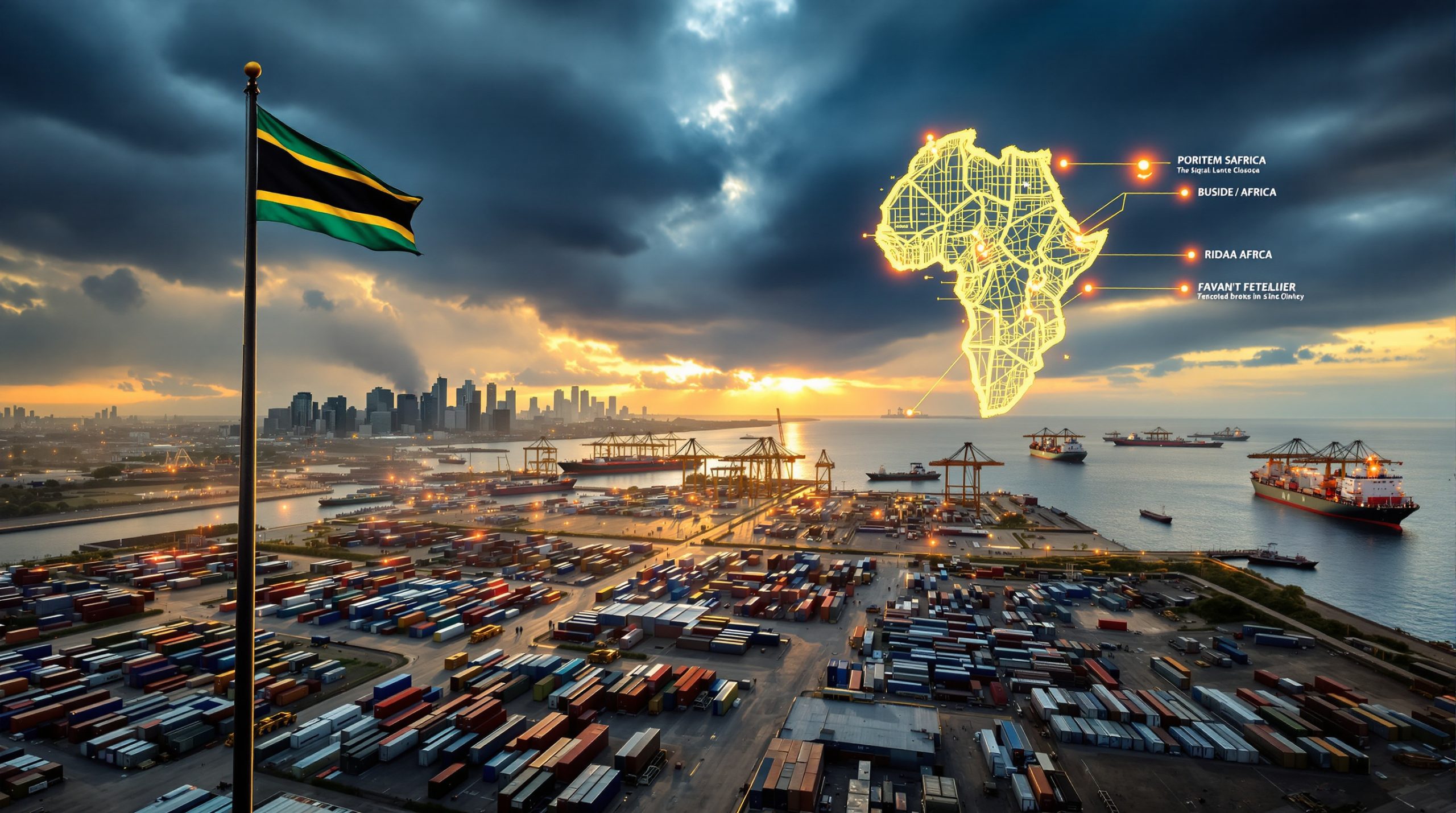Malawi's Critical Mineral Strategy Shapes African Rare Earth Development
The Kangankunde rare earths project in southern Malawi represents more than just another mining development. This massive undeveloped deposit has emerged as a strategic cornerstone for Western supply chain diversification efforts, particularly as African nations implement increasingly sophisticated resource nationalism policies. Recent regulatory developments in Malawi demonstrate how countries across the continent are balancing foreign investment attraction with domestic value creation requirements.
Located in one of Africa's most mineral-rich regions, the project sits at the intersection of global supply security concerns and evolving African mineral governance frameworks. Furthermore, as traditional rare earth supply chains face ongoing geopolitical pressures, developments in Malawi offer insights into how non-Chinese sources might develop within Africa's changing policy landscape.
Resource Scale Positions Kangankunde Among Global Leaders
The Kangankunde rare earths project contains 261 million tonnes of mineralisation grading 2.19% Total Rare Earth Oxide (TREO), establishing it among the world's most substantial undeveloped rare earth resources. Within this massive resource base lies approximately 1.2 million tonnes of neodymium-praseodymium (NdPr) reserves, the critical elements powering permanent magnets in electric vehicles and wind turbines.
These figures position Kangankunde favourably within the global rare earth landscape. According to the U.S. Geological Survey's 2024 Mineral Commodity Summaries, proven rare earth reserves outside China have historically remained limited, making large undeveloped deposits strategically significant for supply diversification efforts.
The project's geographic positioning in southern Africa provides several logistical advantages:
• Infrastructure connectivity through established road networks linking to regional transport hubs
• Proximity to Blantyre, Malawi's commercial centre, reducing transportation costs and complexity
• Regional export access through established southern African shipping corridors
• Power grid connectivity reducing infrastructure development requirements
Geological Characteristics Set Technical Foundation
The deposit's geological profile reveals characteristics that distinguish it from many competing rare earth projects globally. The mineralisation demonstrates ultra-low radioactive material content, a significant advantage that reduces processing complexity and regulatory compliance burdens.
Most rare earth deposits contain varying levels of thorium and uranium as natural co-products, creating additional environmental management requirements. However, lower radioactive content directly translates to:
• Reduced waste management and disposal costs
• Simplified occupational health and safety protocols
• Streamlined environmental permitting processes
• Lower long-term site remediation obligations
This technical advantage contributes to the project's positioning in the bottom quartile of global rare earth production costs, with operating expenses projected at $2.92 per kilogram of rare earth oxides.
Development Timeline Accelerates Toward Production
The Kangankunde rare earths project has achieved critical development milestones positioning it for near-term production. Following completion of an A$91.5 million institutional placement and Final Investment Decision for Stage 1 development, construction activities have commenced targeting specific production benchmarks.
Stage 1 Development Targets:
| Milestone | Target Date | Specifications |
|---|---|---|
| Processing plant commissioning | Q4 2025 | 15,300 tpa capacity |
| First production | Q1 2026 | 55% TREO concentrate |
| Full production ramp | 2026-2027 | Monazite concentrate output |
The accelerated timeline reflects extensive pre-development engineering and the project's relatively straightforward processing methodology. Unlike complex rare earth operations requiring extensive chemical separation facilities, Kangankunde employs physical beneficiation to produce monazite concentrate grading 55% TREO.
Long-term Expansion Framework
Stage 2 development planning envisions significant capacity expansion, with production scaling potential to 50,000 tonnes per annum. This represents a 3.27x increase over initial Stage 1 capacity, supported by the deposit's substantial resource base enabling a 45+ year mine life.
The phased development approach allows operational optimisation and market positioning before major capacity expansion. Consequently, this strategy provides flexibility to respond to global rare earth demand evolution while maintaining capital efficiency throughout the development process.
African Resource Nationalism Reshapes Investment Landscape
Malawi's implementation of Executive Order No. 2 (2025) reflects broader African resource governance evolution, restricting raw mineral exports while exempting processed or value-added materials. The Kangankunde rare earths project's beneficiation approach satisfies these requirements, demonstrating how mining projects can align with emerging policy frameworks.
Section 3 of the executive order specifically exempts processed minerals produced domestically, which Kangankunde's 55% TREO monazite concentrate satisfies. Malawi's government has been briefed on the project's beneficiation plans and reportedly supports this approach, indicating regulatory alignment at senior government levels.
Continental Policy Trend Analysis
Similar resource nationalism policies have emerged across multiple African jurisdictions, reflecting the critical minerals strategy pivot across the continent:
• Indonesia's nickel policy (implemented 2020): Banned raw nickel ore exports, requiring domestic processing
• Zimbabwe's lithium restrictions: Local processing mandates for lithium concentrates
• Democratic Republic of Congo: Artisanal mining formalisation and export controls
• Ghana's bauxite policy: Value-addition requirements for aluminium ore exports
This continental trend reflects African governments' strategic pivot toward capturing more mining value chains domestically. For instance, these policies create both opportunities and challenges for international investors, requiring adaptation of traditional extraction-focused business models toward local value creation approaches.
The confirmation underscores both regulatory resilience and a pivot toward local value creation, now central to resource nationalism trends across the continent.
Investment Climate Implications
The successful navigation of Malawi's export restrictions demonstrates potential pathways for foreign mining investment within Africa's evolving policy landscape. Projects that incorporate local processing, skills development, and technology transfer may find greater regulatory support than traditional raw material extraction operations.
However, several questions remain regarding policy evolution, particularly concerning South African beneficiation opportunities and regional coordination:
• Will export restrictions evolve into stricter local processing mandates?
• How will logistics, taxation, and foreign exchange frameworks adapt across African rare earth corridors?
• Can projects eventually upgrade from concentrates to separated oxides domestically?
Strategic Supply Chain Positioning
The Kangankunde rare earths project addresses critical supply chain diversification objectives for Western technology sectors. With 1.2 million tonnes of NdPr reserves available for extraction over multiple decades, the project provides substantial non-Chinese rare earth supply potential.
Partnership Structure Creates Downstream Security
The strategic partnership with Iluka Resources establishes integrated downstream processing channels through secured offtake agreements. This partnership structure ensures Western-controlled processing of Kangankunde's monazite concentrate, maintaining supply chain security throughout the value-added transformation process.
Iluka Resources operates rare earth processing facilities in Western Australia, providing established infrastructure for concentrate processing into separated rare earth oxides. Furthermore, this partnership eliminates dependence on Chinese processing facilities for value-added transformation.
Key Partnership Benefits:
• Secured offtake agreements reducing market risk
• Established processing infrastructure access
• Western-controlled supply chain maintenance
• Technical expertise sharing for operational optimisation
Market Demand Alignment
Global electric vehicle production is projected to reach 35 million units annually by 2030, according to International Energy Agency projections. Each electric vehicle motor requires approximately 1-2 kilograms of rare earth elements in permanent magnets, with NdPr representing the critical component.
Stage 1 production of 15,300 tonnes annually of monazite concentrate (representing approximately 8,415 tonnes of TREO content) could theoretically support 4.2-8.4 million electric vehicle motors annually. This represents roughly 12-25% of projected 2030 global EV production requirements, highlighting the energy transition in critical minerals.
Economic Resilience Across Market Conditions
The Kangankunde rare earths project maintains economic viability across diverse market scenarios due to its bottom-quartile cost structure. Operating costs projected at $2.92 per kilogram REO position the project favourably against global rare earth price volatility.
Capital Requirements and Funding Structure
Stage 1 development requires $40 million in pre-production capital expenditure, funded through the completed A$91.5 million institutional placement. This relatively modest capital requirement reflects the project's straightforward processing methodology and existing infrastructure access.
The funding structure eliminates development risk while providing operational flexibility for market timing optimisation. In addition, full funding completion before Final Investment Decision demonstrates investor confidence in the project's technical and commercial viability.
Cost Structure Advantages:
| Factor | Advantage | Impact |
|---|---|---|
| Ultra-low impurities | Reduced processing complexity | Lower chemical costs |
| Physical beneficiation | Simplified plant design | Reduced CAPEX |
| Infrastructure access | Existing connectivity | Lower logistics costs |
| Regulatory alignment | Policy compliance | Reduced regulatory risk |
Market Price Resilience
The project's robust economics remain viable even during periods of low NdPr spot prices, providing supply security regardless of short-term market fluctuations. This price resilience stems from the combination of low operating costs and high-grade concentrate production.
Current rare earth market dynamics suggest increasing demand from clean energy and automotive sectors, supporting long-term price stability. However, the project's cost structure provides downside protection during potential market corrections, contrasting with challenges faced by operations like the Namibian uranium mining halt.
Technical Processing Innovation
The Kangankunde rare earths project employs physical beneficiation methodology to produce monazite concentrate grading 55% TREO, representing a technically straightforward yet effective approach to rare earth processing. This methodology avoids complex chemical separation processes typically required for rare earth operations.
Beneficiation Process Advantages
Physical beneficiation offers several operational and environmental advantages over traditional rare earth processing approaches:
• Reduced chemical input requirements minimising operational complexity
• Lower environmental impact through physical rather than chemical separation
• Simplified waste management with reduced chemical waste streams
• Faster production ramp-up due to proven processing technology
The 55% TREO grade achieved through beneficiation meets international export specifications for downstream processing facilities. This concentrate grade provides optimal balance between processing efficiency and transportation economics.
Quality Specifications and Export Standards
Monazite concentrate production targeting 55% TREO aligns with global rare earth processing facility requirements. Major downstream processors typically accept concentrate grades between 45-60% TREO, positioning Kangankunde's output specifications within optimal industry parameters.
The ultra-low impurity profile enhances concentrate quality beyond standard grade specifications. Consequently, reduced radioactive material content and other impurities improve downstream processing efficiency and reduce chemical consumption during separation processes.
Environmental and Community Integration
The Kangankunde rare earths project benefits from strong community support and government backing, reflecting comprehensive stakeholder engagement throughout the development process. This social licence foundation provides operational stability and regulatory security for long-term operations.
Low-Impact Mining Approach
The project's physical beneficiation methodology minimises environmental impact compared to chemical-intensive rare earth operations. Key environmental advantages include:
• Reduced water consumption through physical rather than chemical processing
• Lower chemical waste generation eliminating complex tailings management
• Minimal radioactive waste handling due to ultra-low impurity content
• Simplified site remediation requirements post-mining
These environmental characteristics support regulatory compliance and community acceptance while reducing long-term environmental liabilities.
Regulatory Compliance Framework
The project maintains comprehensive environmental and safety permitting aligned with international mining standards. Malawi's regulatory framework provides clear guidelines for mining operations while supporting foreign investment in mineral development.
Government support for the project's beneficiation approach demonstrates policy alignment between mining development objectives and local value creation requirements. Furthermore, this regulatory support provides operational certainty throughout the project's 45+ year mine life.
Global Critical Minerals Security Impact
The Kangankunde rare earths project contributes significantly to global critical mineral supply security by providing substantial non-Chinese rare earth capacity. With China controlling approximately 70% of global rare earth processing capacity as of 2023, alternative supply sources remain strategically critical.
Western Supply Chain Resilience
The project's integration with Western processing facilities through the Iluka Resources partnership creates end-to-end supply chain control outside Chinese influence. This supply chain structure addresses national security concerns while supporting commercial viability, particularly in light of the defence critical materials strategy.
Strategic Supply Benefits:
• Geopolitical risk reduction through supply diversification
• Price stability enhancement via competitive supply sources
• Technology sector supply security for clean energy applications
• Economic resilience against supply chain disruptions
Clean Energy Technology Enablement
Kangankunde's NdPr production capacity directly supports global clean energy infrastructure development. Permanent magnets containing these elements enable:
• Electric vehicle motor efficiency optimisation
• Wind turbine generator performance enhancement
• Energy storage system integration
• Grid modernisation technology deployment
The project's 45+ year reserve life provides long-term supply security supporting sustained clean energy technology deployment across multiple decades.
Investment Risk Assessment and Market Outlook
The Kangankunde rare earths project presents balanced risk-return characteristics reflecting its technical advantages, regulatory alignment, and market positioning. Key investment considerations include technical execution risk, market dynamics, and regulatory evolution.
Technical Risk Mitigation
Several factors minimise technical execution risk:
• Proven beneficiation technology reducing processing uncertainty
• Straightforward geology with consistent grade distribution
• Established infrastructure access minimising development complexity
• Experienced management team with African mining expertise
The $40 million Stage 1 CAPEX requirement represents relatively modest development risk compared to complex rare earth separation facilities requiring hundreds of millions in capital investment.
Market Risk Considerations
Rare earth market dynamics present both opportunities and challenges:
Positive factors:
• Growing electric vehicle adoption driving NdPr demand
• Renewable energy infrastructure expansion
• Supply chain diversification initiatives
• Critical mineral policy support
Risk factors:
• Rare earth price volatility
• Technology substitution potential
• Chinese market response to competition
• Global economic conditions impact
What Are the Future Regulatory Considerations?
African resource nationalism trends suggest continued policy evolution toward local value creation requirements. The Kangankunde project's alignment with these trends provides regulatory resilience, though policy changes may affect operational parameters or cost structures.
Future policy considerations include:
• Potential upgrade requirements from concentrate to separated oxides
• Taxation and royalty framework evolution
• Foreign exchange and repatriation policies
• Environmental regulation enhancement
Long-term Strategic Positioning
The Kangankunde rare earths project positions itself as a cornerstone asset within evolving global critical mineral supply chains. Its combination of substantial reserves, technical advantages, regulatory alignment, and strategic partnerships creates multiple pathways for value creation across various market scenarios.
Multi-decade Development Potential
The project's 261 million tonne resource base supporting 45+ year mine life enables sustained production across multiple economic cycles. This longevity provides operational flexibility to adapt to changing market conditions, technological developments, and policy frameworks.
Stage 2 expansion potential to 50,000 tonnes per annum creates scalability options based on market demand evolution. In addition, this phased approach balances capital efficiency with growth optionality.
Regional Development Catalyst
Beyond direct mining operations, the project may catalyse broader regional mineral sector development. Success at Kangankunde could demonstrate viability models for other African rare earth projects while supporting local skills development and infrastructure enhancement.
The project's integration with global supply chains creates technology transfer opportunities and establishes Malawi within international critical mineral networks. These broader economic benefits support long-term operational stability and community acceptance.
Disclaimer: This analysis contains forward-looking statements and projections based on publicly available information. Rare earth markets involve significant volatility and geopolitical risks. Investment decisions should be based on comprehensive due diligence and professional financial advice. Market conditions, regulatory frameworks, and project parameters may change materially from current projections.
Looking to Capitalise on Africa's Critical Mineral Revolution?
Discovery Alert's proprietary Discovery IQ model delivers instant notifications on significant ASX mineral discoveries, empowering subscribers to identify actionable opportunities in the rapidly evolving critical minerals sector ahead of the broader market. Begin your 30-day free trial today at Discovery Alert and position yourself to capture the next major breakthrough in Africa's strategic mineral landscape.




